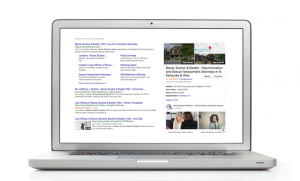Columnist Jason Warnock explains how to maintain long-term relationships with your customers and ensure you’ve enough budget to keep them engaged.

In last month’s column, I discussed how your brand can convert subscribers into salespeople. But moving people from the subscriber category to the brand advocate category is just the beginning of the advocacy lifecycle.
Now that you have identified brand influencers and defined rewards packages, how do you maintain engagement beyond the initial interaction? And just as importantly, how do you determine how much budget to allocate for email campaign and incentives that will motivate advocates to stay engaged?
Keeping Brand Advocates On Board
Long-term brand advocacy is an elusive goal for a lot of brands. It’s difficult enough to bring committed brand advocates into the fold. But keeping them in the fold presents an entirely new set of challenges.
Here’s the uncomfortable truth: If your advocates don’t continue to experience satisfaction and value, they aren’t going to remain loyal to your brand.
It’s important to keep advocates engaged through tailored content that encourages them to participate in two-way conversations with the brand. If advocates feel a sense of ownership over the brand voice, they will continue to advocate for the brand in their social networks.
The other ingredient for retaining long-term brand advocates is the use of incentives. But for an incentive program to be useful, it needs to include several key elements:
• Incentives need to be valuable. Advocacy incentives have to provide real value to advocates, and compensate them for their time and effort. When thinking about value, you must understand what motivates consumers to share.
If a customer doesn’t feel that performing your ask (i.e., share this coupon to 10 friends to receive 10% off) is worth the reward, they likely won’t continue to participate.
• Incentives have to gradually increase. The value of incentives has to consistently increase to keep advocates motivated. For example, a customer isn’t going to continually share an offer to friends if he or she will only ever receive 5 percent off a purchase.
When thinking about incentives, consider increasing the value each time customers share. As they continue to share, they accrue a greater number of people they share with, and the reward should reflect their continued efforts.
• Incentives must align with the advocate lifecycle. Incentive programs need to be calibrated to the advocate lifecycle, ensuring that advocates are rewarded appropriately at every stage of the relationship.
Here, it’s important to give customers a voice into what they would like to advocate for. As your relationship with the advocate increases, you can understand what he or she wants and tailor the incentives accordingly.
As advocates’ relationship with the brand matures, the brand needs to transition from short-term incentives designed to recruit advocates to a long-term incentive program that keeps advocates interested in the brand for as long as possible.
In essence, incentive-based advocacy consistently approaches the line of making advocates employees of the brand, without actually making them employees.
Calculating The Cost Of Advocacy Buys
Most marketers plan their budgets around media buys. To maintain robust advocacy, marketers also need to start budgeting for “advocacy buys,” i.e., the cost of incentives that motivate advocates to remain engaged with the brand.
To develop a proper advocacy strategy in conjunction with your brand’s email campaigns, it’s important to forecast the cost of advocacy buys during the budgeting process.
1. Understand the advocate percentage of audience. The first step in determining the cost of advocacy is to understand the percentage of email subscribers who will share the email campaign with their social followers.
Since the advocate percentage of audience varies by campaign, it may take three to five test campaigns to identify the average advocate percentage of your email audience.
2. Identify the number of advocate subscribers. A basic formula will help determine the total number of advocate subscribers that will engage with email campaigns:
Campaign Volume * Advocate % = Advocate Subscriber #
By applying the brand’s advocate percentage to the total subscriber volume that will receive campaign emails, you can effectively gauge how many advocates are available for incentives associated with each email marketing initiative.
3. Forecast the advocacy buy per campaign. Multiplying the total number of advocate subscribers by the average incentive per advocate yields the brand’s estimated advocacy buy per campaign. For example, if the brand expects 1,000 advocate subscribers per campaign and offers an average discount of $5 per advocate, the total advocacy buy for the campaign would be $5,000.
The calculation of the advocacy buy accomplishes several things. In addition to enabling the brand to incorporate the cost of ongoing advocacy into marketing budgets, advocacy buy calculations help guide decision-making. In some cases, it may be worthwhile to reallocate budget spend to incentive programs for existing advocates.
The recruitment of brand advocates isn’t a destination — it’s a journey that is fueled by incentives and investments in advocacy.
In general, it’s advisable for brands to target a 75/25 split — allocating $1 for advocacy for every $3 that are allocated for media buys. If advocacy buys are successful, it may be beneficial to allocate additional spend toward advocacy.
As tracking and understanding consumer behaviors becomes more sophisticated, it’s important that marketers use these insights to develop strategies for creating and maintaining long-term relationships.
The advocacy buy is in a sense, as important as a media buy. The give-and-take relationship you can develop with consumers can be profitable not only in terms of sales, but in terms of new customers as well.
Some opinions expressed in this article may be those of a guest author and not necessarily Marketing Land. Staff authors are listed here.
(Some images used under license from Shutterstock.com.)
Marketing Land – Internet Marketing News, Strategies & Tips
(234)










